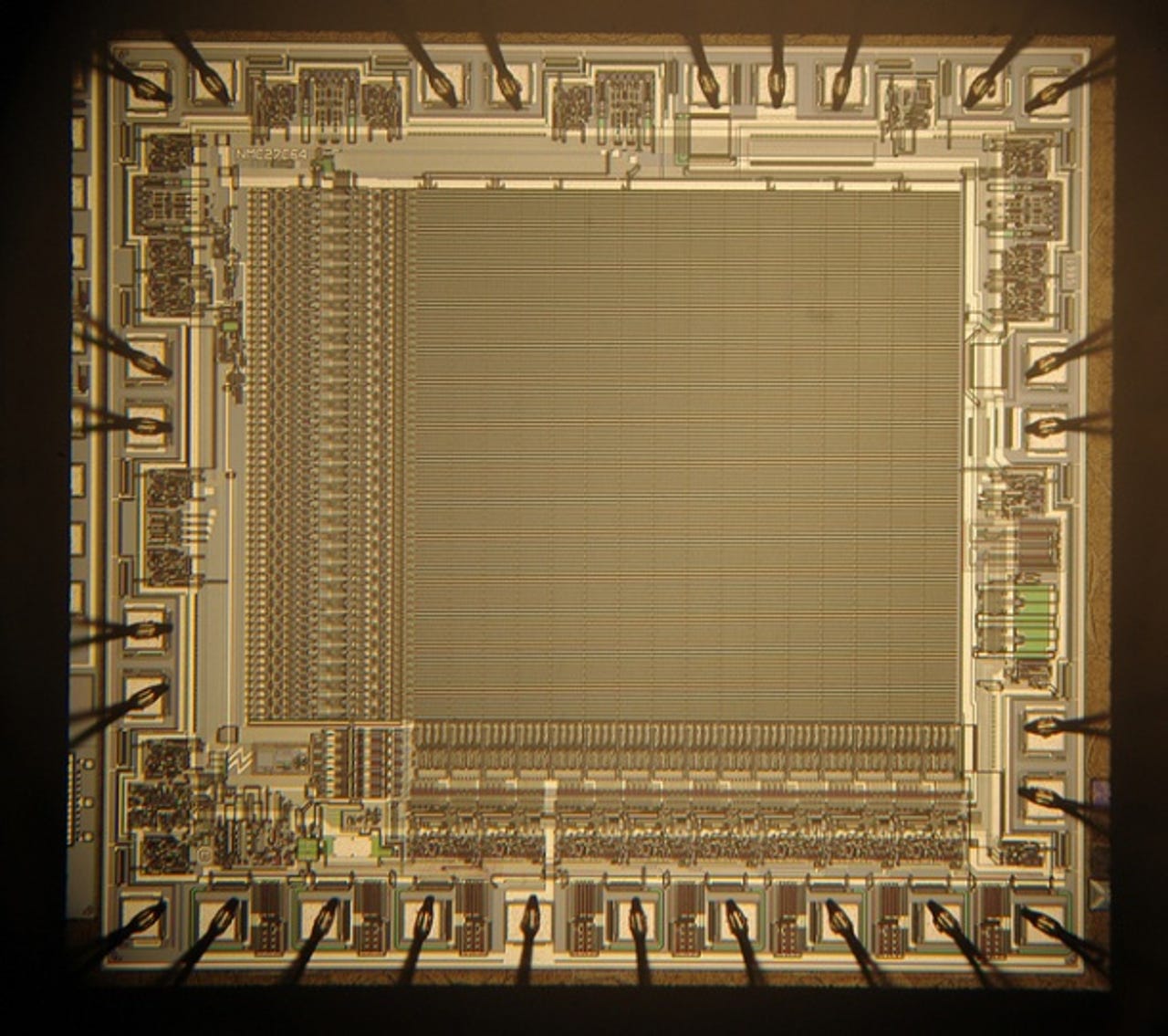Intel's victims: Eight would-be giant killers


Nat Semi image
Since Intel introduced the 4004 microprocessor nearly 40 years ago, the company has grown into the world's largest processor maker with a monopoly in the desktop and an overwhelming presence in servers and supercomputers.
Starting with the 8086 — the chip IBM chose for its 1981 industry-defining PC — Intel has defined the industry. Such a target has attracted a lot of fiesty competition, large and small. These are their stories, from hopeful start to inevitable failure.
National Semiconductor
First up is National Semiconductor, which had a few bites at the processor market. The first was in the mid-1970s with the spectacularly slow SC/MP 8-bit processor (above), popular with hobbyists and nobody else.
In the late '70s, Nat Semi launched what may be the first 32-bit processor — the 16032, later renamed the 32016. It was used in a couple of spectacularly unsuccessful Acorn products: a BBC Micro second processor and the Acorn Cambridge Workstation. Complex, unreliable and unpopular, it eventually transmuted to an embedded processor and quietly vanished.
In the late 1990s, Nat Semi bought fellow chipmaker Cyrix and produced the Geode low-power x86 part, then lost huge amounts of money and sold Cyrix to Via just before 2000. It kept the Geode until 2003, when it sold it to AMD.
RCA 1802 image
RCA
An intriguing chip, the 1802 (above) was a very early 8-bit design from RCA. It is most famous for being on the Voyager spacecraft that is currently at the edge of the solar system. Unfortunately, this is not actually true, although the 1802 is in various later spacecraft, such as Galileo and the Space Shuttle, as its very conservative design makes it highly resistant to radiation.
RCA supported the 1802 for a few years, producing a decent range of support chips and variants. However, although the processor did survive long enough to make it into Nokia's first mobile phones, it remained an evolutionary dead-end.
Texas Instruments TMS-1000
Texas Instruments
Texas Instruments (TI) was granted the first patent for microprocessors, which Intel cross-licensed, and for a while the company was a real force in the technology. Its first processor, the TMS 1000 (above), came out in 1974 and was a fairly simple 4-bit design with strong pocket calculator heritage.The only processor that made it into the mass consumer market, though, was the TMS9900, a 16-bit chip from 1976 that TI put into the TI-99/4 home computer.
Based on minicomputer architecture, the TMS9900 was beautifully engineered and far better suited to multitasking than Intel's 8086. However, that elegance came at the cost of performance. Its uptake by the market wasn't helped by TI choosing to directly compete with other home and business computer manufacturers. Once again, embedded variants had a longer life.
Zilog Z8002
Zilog
An offshoot of Intel, Zilog had considerable initial success with its Z80 processor — a cheaper, more powerful and intelligently extended compatible variant of Intel's popular 8080. Nothing else Zilog did managed to replicate the success — mostly because nothing else it did had compatibility with other processors.
The 16-bit Z8000 — the Z8002PS is pictured above — was a contemporary of the 8086, with a cleaner architecture, but that had speed and bug problems. It was going to be used by Commodore, but the company went for Motorola and the Amiga design instead.
A last gasp, the 32-bit Z80000, turned up much later than Zilog had hoped, at roughly the same time as Intel's 80386 in 1986. Again, it had superior engineering but no compatibility with PC software. Game over, and Zilog concentrated on — yes — embedded systems.
Motorola 68000
Motorola
The company that had arguably the best shot at ending Intel's dominance before it began, Motorola produced what many consider the finest 8-bit chip ever, the 6809, just as the 8-bit market was shifting to 16-bit.
Its 16 and 32-bit architecture was much more successful: the famous 68000 (above) was adopted by Apple, Atari, Commodore, Sinclair and many Unix makers, and was almost selected for the IBM PC.
Industry fable has it that Motorola disbanded the design team immediately after producing the processor, but before the support chips had been created. IBM preferred the 68000, but wanted a complete kit of parts to speed up the design of the PC, and only Intel was ready to deliver. By the time Motorola wised up, it was too late.
Motorola continued to develop the 68000 series through to the 68060 in the mid-1990s. However, it couldn't keep up with Intel chips' power consumption, clock speed and overwhelming industry software advantages, which let Intel out-perform through force any design advantages the Motorola parts had.
The architecture lives on, of course, in embedded parts.
Mostek 6502
Mostek
Another popular competitor to Intel's 8080 8-bit processor, Mostek's 6502 (above) and its variants had and have many fans. Found at the heart of the Apple II, the Commodore 64 and the BBC Micro, the 6502 was simple, efficient and massively cheaper — $25, instead of $179 — than the opposition.
However, it never got the advantage of a common software base across different manufacturers, and the people behind it never got enough cash to compete properly. There was a 16-bit successor — the 65C816 — that did well at the heart of Nintendo's SNES games console, and once again there are embedded variants that continue to sell.
The spiritual successor to the 6502 is the ARM architecture, which was consciously designed around the same ethos of simple efficiency, and which is alone in the world as a serious Intel competitor.
IBM PowerPC
AIM
The PowerPC was a joint effort from the AIM consortium — Apple, IBM and Motorola — which resulted from the three companies pooling their efforts in an attempt to stem Intel's desktop tsunami.
Introduced in 1992, the PowerPC created a burst of interest — OS/2, Windows NT and Solaris all had PowerPC versions — which died away quickly, as nobody bothered to move x86 applications over to the new platform.
Apple stuck to the architecture until 2004, when it capitulated and moved to Intel, and PowerPC left the desktop. It's still in IBM mainframes and, as is entirely predictable, embedded applications.
Transmeta Efficeon
Transmeta
Transmeta is one of the more recent — certainly one of the most unusual — Intel competitors. Instead of producing a chip that ran Intel code, the Transmeta low-power architecture was designed to run its own native code enormously efficiently and relied on software translation of Intel-compatible code to work with Windows and applications.
It worked, but never quite well enough. Transmeta chips — 2001's Crusoe and 2003's Efficeon (above) — were never fast enough to compete, and AMD and Intel's chips rapidly became more efficient themselves. Plus, nobody ever produced native applications to really make the silicon fly, even though Transmeta did hire Linus Torvalds.
The story doesn't end there. Transmeta sued Intel for intellectual property infringement, and got a substantial out-of-court settlement. In 2009, it sold itself to another, mysterious company called Novafora in a deal that also included Intellectual Ventures, Microsoft's ex-chief technology officer Nathan Myhrvold's patent-licensing company, which got all of Transmeta's patents. Shortly after that deal, Novafora itself vanished.